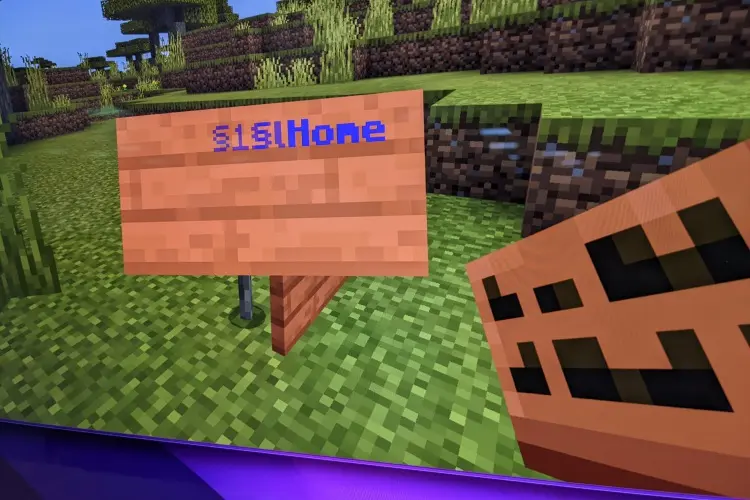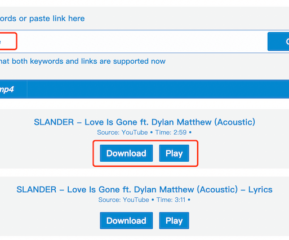In the world of Minecraft, color plays a crucial role in customizing and personalizing your gaming experience. With the use of color codes, players can modify the appearance of various elements within the game, including text, signs, and even wool blocks.
Understanding and utilizing Minecraft color codes effectively can add an extra layer of creativity to your gameplay. In this comprehensive guide, we will delve into the world of Minecraft color codes, exploring their purpose, and how to use them, and showcasing some exciting examples.
Table of Contents
What are Minecraft Color Codes?
Minecraft color codes are a system of formatting text and altering the colors of different in-game elements. These codes are composed of a special character, the section sign (§), followed by a code or letter that determines the color or formatting style applied to the text. By incorporating these codes into your Minecraft commands or in-game chat, you can transform the appearance of text and other visual elements.
Similar read: Minecraft’s Cross-Platform Capabilities
Why are color codes important in Minecraft?
Color codes play a vital role in Minecraft as they offer players a way to express their creativity and customize their gameplay experience. By using color codes, players can add flair to their chat messages, create eye-catching signs, design visually appealing books and quills, and enhance command block creations.
How can color codes enhance your Minecraft gameplay?
By utilizing color codes, players can bring their creations to life and make them stand out in the Minecraft world. Whether you’re building an intricate adventure map, hosting a server event, or simply chatting with friends, color codes enable you to add a personal touch and make your content more engaging and immersive.
Basic Color Codes
Minecraft color codes offer a wide range of colors to choose from. Here are some of the most commonly used color codes and their corresponding colors:
§0: Black
§1: Dark Blue
§2: Dark Green
§3: Dark Aqua
§4: Dark Red
§5: Dark Purple
§6: Gold
§7: Gray
§8: Dark Gray
§9: Blue
§a: Green
§b: Aqua
§c: Red
§d: Light Purple
§e: Yellow
§f: White
These color codes can be combined with other formatting codes to create unique and eye-catching effects.
Formatting Codes
In addition to changing colors, Minecraft color codes can also be used to apply various formatting styles to the text. Here are some commonly used formatting codes:
§k: Obfuscated (random characters)
§l: Bold
§m: Strikethrough
§n: Underline
§o: Italic
§r: Reset (removes all formatting)
By combining color codes and formatting codes, you can create intricate and visually appealing text displays within the game.
Understanding Color Codes in Minecraft
RGB color model and its relevance to Minecraft
The RGB color model is the foundation of Minecraft color codes. It is a system that represents colors by combining different intensities of red, green, and blue. In Minecraft, each RGB value corresponds to a specific color or shade that can be used with color codes to achieve desired visual effects.
Similar read: Top 10 Minecraft Cracked Servers
Minecraft’s formatting codes and their uses
Formatting codes in Minecraft are special symbols that are used alongside color codes to modify the appearance of text. These formatting codes allow players to apply styles such as bold, italic, underlined, strikethrough, and obfuscated to their text, in addition to changing the color.
Different types of color codes in Minecraft
Minecraft features different types of color codes that can be used in various contexts:
Chat color codes:
Used to change the color and formatting of chat messages.
Sign color codes:
Used to customize the text colors on signs.
Book and quill color codes:
Used to format text in books and quills, creating visually appealing stories and guides.
Command block color codes:
Used to enhance command block outputs with colors.
Implementing Color Codes in Minecraft
How to change the color of your chat messages?
To change the color of your chat messages, you can use the “&” symbol followed by a color code or formatting code. For example, “&6Hello!” would display “Hello!” in gold color.
Applying formatting styles to your messages?
In addition to colors, you can apply formatting styles to your chat messages. For instance, “&lHello!” would display “Hello!” in bold.
Similar read: Guide To Creating And Sharing Minecraft Seed Maps
Sign color codes
Customizing text colors on signs
To customize the text colors on signs, you can use color codes within brackets. For example, “[&cHello!]” would display “Hello!” in red on a sign.
Adding formatting effects to signs
In addition to colors, you can apply formatting effects to signs. Using formatting codes, you can make the text bold, italic, underlined, or strikethrough, providing more visual variety to your signs.
Book and quill color codes
Formatting text in books and quills
When writing in a book and quill, you can apply color codes and formatting codes to the text. This allows you to create visually appealing stories, guides, or even in-game manuals.
Creating visually appealing stories and guides
By utilizing color codes and formatting codes in books and quills, you can add different colors, styles, and emphasis to your text, making your creations more visually appealing and immersive.
Command block color codes
Using color codes in command block outputs
Color codes can also be used in command block outputs, allowing you to customize the appearance of text displayed by command blocks. This can be useful for creating interactive systems or visual feedback within your Minecraft creations.
Enhancing command block creations with colors
By incorporating color codes into command block outputs, you can make your creations more visually appealing and provide clear indications to players about the status or outcome of certain actions.
Advanced Color Code Techniques
Creating smooth color transitions
With advanced color code techniques, you can create smooth color transitions or gradients. This allows you to achieve stunning visual effects by smoothly blending different colors together.
Similar read: How Do You Extract Honeycomb From A Beehive In Minecraft?
Applying gradients to text and signs
By applying gradient color codes to your text or signs, you can achieve eye-catching visual effects that transition smoothly from one color to another. This can be especially useful for highlighting important information or creating visually impressive signage.
Rainbow text and effects
How to achieve rainbow-colored text
Rainbow text can be achieved by utilizing a series of color codes that cycle through different colors rapidly. This creates a vibrant and dynamic effect that can be applied to various elements in Minecraft.
Adding dynamic effects to text using rainbow colors
In addition to rainbow text, you can combine rainbow colors with formatting codes to create dynamic effects such as flashing, pulsating, or scrolling text. These effects can add a touch of liveliness and interactivity to your Minecraft creations.
Custom color combinations
Creating unique color schemes
By experimenting with different color codes and RGB values, you can create unique and customized color schemes that suit your personal preferences or match the theme of your Minecraft builds. This allows you to add a personal touch to your creations and make them truly stand out.
Experimenting with different combinations
The possibilities with color codes are virtually limitless. Don’t be afraid to experiment with different combinations of colors, formatting styles, and effects to discover new and exciting visual designs. Unleash your creativity and let your imagination guide you.
Sharing and Using Color Codes
Obtaining and sharing color codes
To obtain color codes, you can refer to online resources, forums, or community guides that provide a comprehensive list of available colors and their corresponding codes. Additionally, you can share your own color code creations with the Minecraft community, allowing others to use and appreciate your designs.
Importing color codes from online resources
If you’re looking for inspiration or ready-to-use color schemes, you can import color codes from online resources. These resources often provide pre-made color combinations that you can directly apply to your Minecraft projects.
Showcasing your color-coded creations
Finally, don’t forget to showcase your color-coded creations to the Minecraft community. Share screenshots, videos, or even world downloads to demonstrate the visual impact and creativity achieved through the use of color codes.
Conclusion:
Minecraft color codes offer a fantastic way to enhance your gaming experience by adding vibrant and visually appealing elements to the game. By understanding how to use color codes and formatting styles, you can create stunning titles, highlight important information, and customize player names within the Minecraft universe.
FAQs:
What are color codes in Minecraft?
Color codes in Minecraft are special formatting codes that can be used to change the color of text in the game. They are denoted by the section sign (§) followed by a color code or formatting code.
How do I use color codes in Minecraft?
To use color codes in Minecraft, you need to use the section sign (§) followed by a color code or formatting code. For example, typing "§cHello" in the chat would display "Hello" in red color.
Can I use color codes in Minecraft's chat, signs, and books?
Yes, color codes can be used in the chat, on signs, and in books. However, please note that color codes may not work in all parts of Minecraft, such as command blocks or certain server plugins.
Can I combine multiple color codes together?
Yes, you can combine multiple color codes together to create different color combinations. For example, "§c§lHello" would display "Hello" in bold red color.
How do I enter color codes in Minecraft Bedrock Edition (mobile/console)?
In Minecraft Bedrock Edition, you can enter color codes by using the "&" symbol instead of the section sign. For example, "&cHello" would display "Hello" in red color.
- What is Epic Games Launcher and How to Install It? - July 15, 2024
- What Is Audius Music Streaming App and How Does it Work? - July 13, 2024
- The 10 Best Astronomy Apps for Stargazing - July 12, 2024





